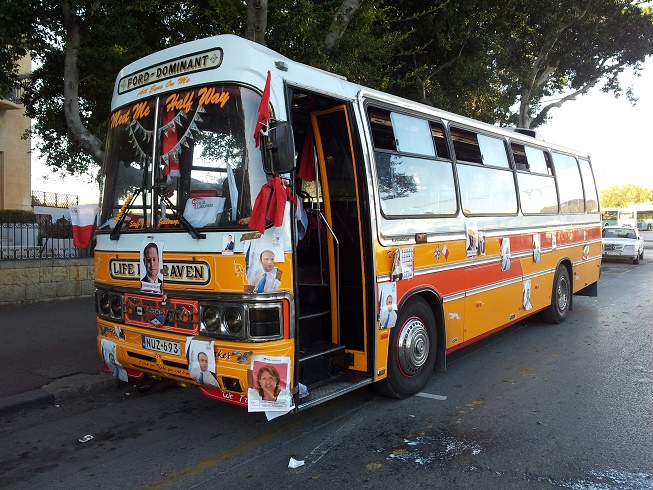I have never been in the Arab countries before... so Malta was my first! Yes I know it's part of EU and has even the euro in circulation but you get the feeling all the time.
First of all the Maltese language - it not only has its roots in the Arabic of western North Africa but it sounds like one. Look at these words for instance: misrah - "square", tahib - "doctor" or triq - "street, road".
Secondly, the fortifications built by the Arabs (Malta had been occupied by them from 870 till 1090 AD) notably in Mdina and Rabat (rabat means "suburb" in Arabic) which is just 5 min walk from there.
In 1800 the British took possession of the islands till 1921 (full independence since 1964). Many street signs, shop names are in English only. Early in the morning almost at any newsstand you can buy the daily British newspapers. In some places you don't feel like you are abroad at all. During WWII Malta was subjected to an intense and prolonged aerial bombardment (thus becoming the most bombed country) but the Maltese never surrended. Malta's effort was recognized with the George Cross - the only time the medal has been awarded to a whole nation!
Don't miss the Mosta Dome church, very impressive with a huge rotunda (claimed to be Europe's third-largest) but it witnessed a miracle: during WWII a Luftwaffe bomb pierced the dome... but failed to explode. A three-hundred-strong congregation considered this as a divine protection! If you want to know more about WWII and the British legacy go to the Saluting Battery where every day at noon and sunset a cannon is fired as a salute. It's free and great fun... and it's very loud!
For ancient history lovers Malta is a must: it's literally littered with... Neolithic temples, five of which are designated World Heritage Sites. I was really impressed by the Hypogeum which is one of the oldest and most impressive monuments of the ancient world, built between 3600 and 2500 BC. Standing underground in half-lit chambers and looking at reddish drawings on the ceiling I suddenly "got a picture": small ancient people cut out of rock beautifully symmetrical chambers and alleys using just primitive tools and oil-torches... It was a moment of connection to the ancient world for me. Wow! Ticket is just 10 euro but book well ahead (at least 2 months before). We didn't book in advance instead we got on the expensive (25 euro) noon tour on Sundays. Just 5 min walk from here is another ancient temple - Tarxien's Neolithic temple. You'd find there a replica of the bottom half of the "Fat Lady" figure: the whole (2.5 m high), it would make it the largest of these figures found anywhere in the world.
Malta is blessed by the fact that in 60 AD St Paul was shipwrecked here during his voyage to Rome. He spent three months converting the population to Christianity. He even managed to deal with the local snakes - they ceased to be venomous thereafter! (Remember St Patrick had banished them from Ireland altogether). St Paul's Bay is a lovely place to visit, the colour of the water is just amazing! You have to go to Bugibba where they also have Wignacourt Tower built by the knights and a small St Paul's shipwreck church. It is said he has been interned in a cave in Rabat, it's located below the church and is open to the public. Not far from here you can visit St Paul's Catacombs - a claustrophobic maze of early Christian burial chambers (IV-V cent. AD) or even bigger St Agatha's Catacombs (400 AD).
Valletta - the capital of Malta (II-Belt in Maltese)
One of the many narrow and steep streets in Valletta
Mosta Dome in the evening
The iron muzzle - the medieval art of punishment (for nosey women)
The luzzu boats in Marsaxlokk
The classic Malta bus
